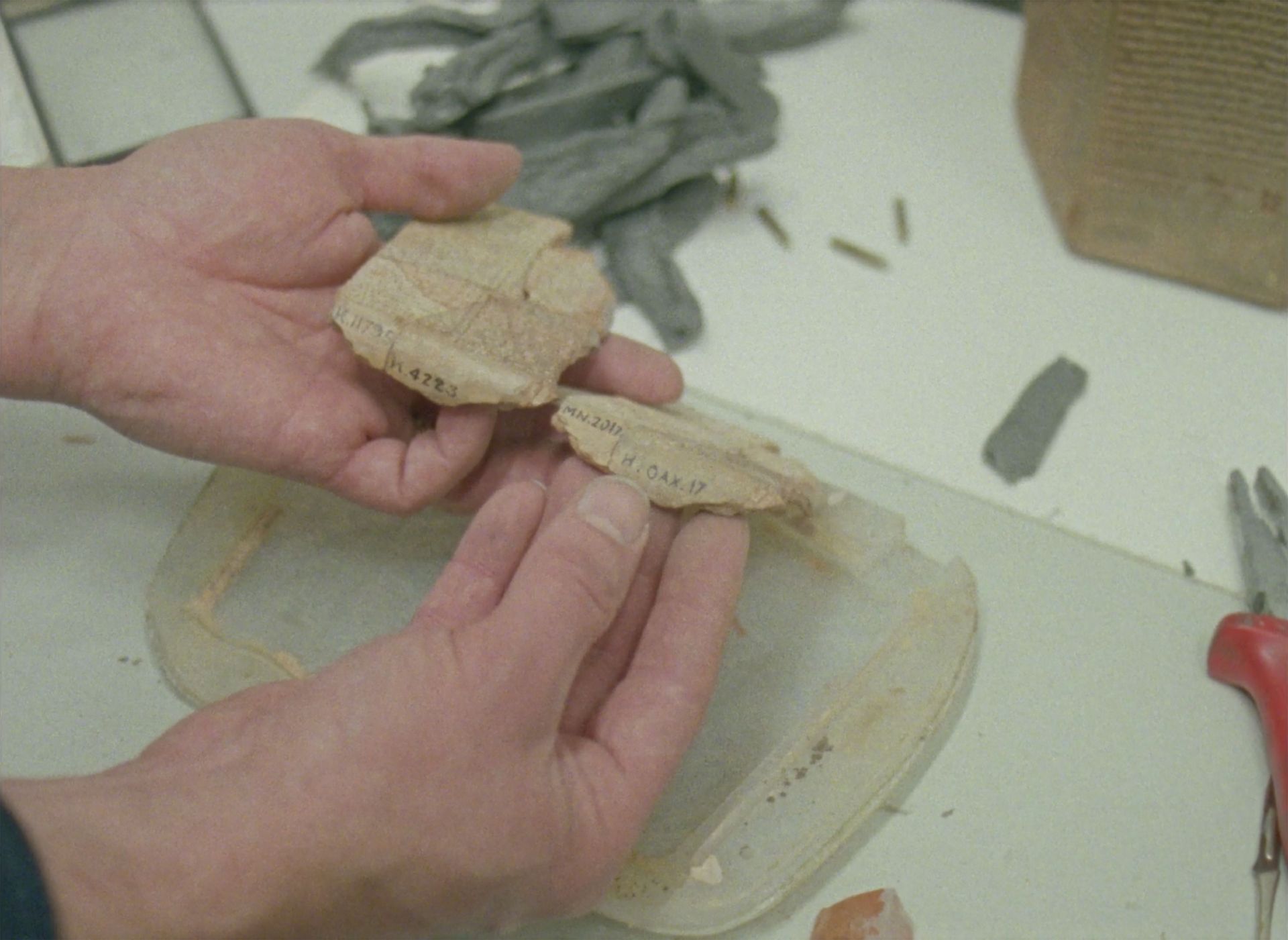News 5 March 2020
FIRST PERSON PLURAL – the Exhibition
The preparations for the 33rd European Media Art Festival, which opens on 22 April, are in full swing. They already started last year. By the end of the year, some 2,500 filmmakers* had submitted their works for screening by the five-member selection committee headed by festival director Katrin Mundt. Together with her, Godart Bakkers, Juan David González Monroy, Stefanie Plappert and Sebastiaan Schlicher selected 120 films from forty countries.
Numerous contributions to this year's International Competition are dedicated to the question of how we can capture the traces of the past and the gaps in our personal and collective memory in the present. In her work, Salma Shamel refers to a committee formed after the Egyptian Revolution in 2011 to create an archive of the recent past. She asks about the possibility of capturing a revolutionary moment in the media. Lawrence Abu Hamdan portrays a man who sees himself as the reincarnation of a killed Lebanese resistance fighter and asks how our relationship to history changes when it lives on not only in objects but also in bodies.
Other works find new artistic approaches to landscapes in which excessive economic activity, colonization or natural disasters have left their mark. Diana Vidrascu leads us to a place where volcanoes and phantom islands, natural and supernatural phenomena condense into a surreal landscape. Using historical children's drawings and interviews, Ana Vaz reconstructs the crimes committed against the indigenous population under the Brazilian military dictatorship. At the same time she suggests the possibility of a different life and coexistence.
Other films examine the interfaces, forces of attraction and repulsion between human and non-human bodies. Chloé Galibert-Laîné asks to what extent communication via social media leaves room for empathy with the suffering of others, and how these promote the viral spread of suffering. Stefan Panhans & Andreas Bunte examine the gap that opens up between spontaneous and programmed movements. Under laboratory conditions, performers study controlled falling - a laborious approach to the imperfection of avatars.
In the feature film section, Jessica Sarah Rinland's new work is shown, among others, which sheds light on the processes of museological and ecological conservation in captivating images - the materiality of originals and their doubles, the precision and elegance of rehearsed gestures. Conservators, their tools and objects become equal players here.
Camilo Restrepo's recent feature film debut at the Berlinale revolves around a young man who, having just escaped a religious sect, is haunted again and again by the ghosts of the past. A cinematic trip that oscillates between physical and hallucinated reality, painting an impressive picture of the Colombian present. As a historical feature film, the EMAF is showing Howard Alk´s The Murder of Fred Hampton from 1971, a portrait of the charismatic chairman of the Illinois Black Panther Party, who was shot in his sleep by the police at the age of 21. The film provides a meticulous reappraisal of the murder and thereby conveys a multi-layered picture of the Black Panther Party's initiatives for a better life not only for the black population under Hampton's motto "All Power to All People".
Curated by Herb Shellenberger (London), the extensive programme on the festival theme FIRST PERSON PLURAL comprises films from the early 20th century to the present day that revolve around the motifs of face and mask. What does a face reveal on the screen? When does a mask reveal more than the seemingly authentic expression of a human face? The ego in front of the camera is always a multiple - also and especially in self-portraits, and in the image of the "stranger" we often enough only want to encounter ourselves. Last but not least, camouflage, doubling and disguise can serve as a strategy to unmask political and social conditions. Documentary classics such as Johan van der Keuken can be found here alongside artistic films by Maria Lassnig, Suzan Pitt and Juan Downey as well as current works by Aaron Zeghers & Lewis Bennett, belit sağ and The New Red Order, among others.
The artists Steve Reinke (Chicago) and Jaakko Pallasvuo (Helsinki) present a programme entitled The New Death, which proposes alternative narratives to the currently so present threat scenario of the inevitable death and extinction of species. The selected films tell of beings in which the human and the non-human, the living and the non-living merge, which are at the same time more and less than one whole. It is about lust, which is inflamed by death and thereby overcomes it, and about the coexistence of generations, which always keeps death, i.e. the succession, in view. And last but not least, narrative itself becomes a subject that can postpone, complicate and reverse the linear flow of time. On view are works by Keren Cytter, Anastasia Sosunova, Barry Doupé, Fuyuhiko Takata, Germaine Dulac, Lu Yang, Angelo Madsen Minax, Andrew Norman Wilson and others.
We cordially invite you to visit the 33rd European Media Art Festival and be present at the opening on 22 April at 7.30 pm in the Kunsthalle Osnabrueck.
With best regards
The team of the European Media Art Festival 2020
